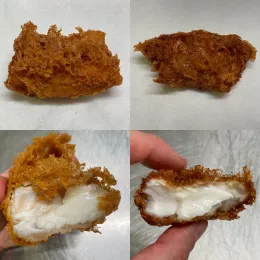But what does it mean? What is your culinary voice, how do you find it and where does it come from? Each student or alumnus of ICE has their very own personal responses to these questions, and each student must look to their past and to their future to find the answers.
Food unites us all – its vast reach can mean so many things to so many people. It can signify life, nourishment, health, taste, aroma, art, travel. A meal can be a warm embrace to welcome an unfamiliar face or to reunite long lost friends. A single taste or aroma can evoke nostalgia, it can transcend time and trigger memories of a special season or place. It can bring strangers together, it can cross borders, and in an instant bite we can share insight from an array of cultures.
All of these pertinent life experiences add to your culinary voice. It is made up of a great pyramid of culinary building blocks: the foundations of culture, tastes of home, the daily meal at the table, the cooking of a beloved family member, a recipe passed down through generations. Then we add layers built from memories of travel to another town or another country. We all have cherished moments around food: it may be a family gathering, a barbecue in summer, a rich warming stew in the winter, the aroma of seafood and the coastal air. We also have the tastes of many other culinary voices contributing to your own. For cooks, the people we work with contribute to our own ideas of food. Flavors, tastes and presentation all add to the building blocks for our very unique styles.
So many contributing factors show the essence of the amazing food world we live in. Each person, each cook and each chef develops a very personal notion of what food is and what it means to them, each built from so many amazing experiences.
Here at ICE, we share all the foundational skills with which your culinary voice will be built. We teach critical technique, work ethic, skill, science and geography. Without these crucial learning points, it is not possible to move on to the creative aspect of food. Technique must be mastered before a creative flow can take hold. We provide the essential tools that you can use to carefully sculpt your own culinary vision, to find your culinary voice.
Here I have shared one of my recipes that encapsulates my culinary voice, which is innovating and continuing to push culinary boundaries as a chef. Myriad influences from my childhood in Southwest England, my move to London to continue my professional journey, my time spent in rural France and many other countries in Europe — and the influence of my culinary mentors and chefs — each contribute in various forms to my own vision and understanding of what food means to me. A prime example of those influences coming together is in this dish with lobster and crème fraiche inspired by Northern France, curry oil from England's Indian flavors, purée and sous vide techniques I learned from Chef Paul Gayler MBE and marigolds from my garden.


Ingredients
For the butternut squash purée:
- 200 grams butternut squash diced evenly (medium)
- 50 grams heavy cream
- Salt
For the roasted butternut squash discs:
- 2 discs butternut squash
- Unsalted butter
- Salt
- Canola oil
For the orange crème fraiche:
- 100 grams crème fraiche
- 22 grams orange juice, freshly squeezed
- 0.5 grams xanthan gum
- Salt
For the Madras curry oil:
- 18 grams Madras curry powder (fresh)
- 200 grams grapeseed oil
- 2 grams salt
For the poached lobster in curry oil:
- Salted water for blanching
- 1 lobster tail
- 150 grams curry oil
- Salt
- Fennel pollen
Directions
For the butternut squash purée:
- Place all ingredients in a vacuum pouch. Seal on 100%.
- Cook at 185 F for 1 hour, until tender.
- Blend in Vita-Prep until smooth and adjust seasoning.
For the roasted butternut squash discs:
- Peel butternut squash and slice the top of the vegetable into 3/4-inch slices. Using a round cutter, cut out 2-inch discs.
- Heat canola oil in pan. Brown each side of the discs.
- Add butter and salt and cook in foaming butter until cooked through.
- Remove from heat and drain excess butter.
For the orange crème fraiche:
- Whisk all ingredients until smooth, place into squeeze bottle.
For the Madras curry oil:
- Toast Madras curry powder in pan until fragrant.
- Add grapeseed oil and salt and cook for 1 minute.
- Remove from heat and leave to infuse for minimum of 1 hour.
- Drain through a chinois and coffee filter into a container for assembly.
For the poached lobster in curry oil:
- Prepare lobster: Place an 8-inch skewer through the tail meat to keep the meat from buckling when cooked.
- Heat salted water to boiling point. Turn off heat, add tail and leave for 4 minutes. Immediately plunge into iced water. Remove tail meat from shell.
- Place lobster tail in a small sauce pan and add a pinch of fennel pollen and 150 grams of curry oil.
- Slowly poach in curry oil at 130 F for 20 minutes (adjust depending on size).
To assemble:
- Drain lobster from curry oil. Cut the lobster in half lengthways, season with Maldon sea salt and fennel pollen.
- Place sautéed butternut squash discs on either side of the lobster.
- Using a piping bag or squeeze bottle, place butternut squash purée and crème fraiche.
- Drizzle with curry oil.
- Dress the cut side of the lobster with marigold leaves and place petals around the dish.
Find your culinary voice in ICE's career programs.




